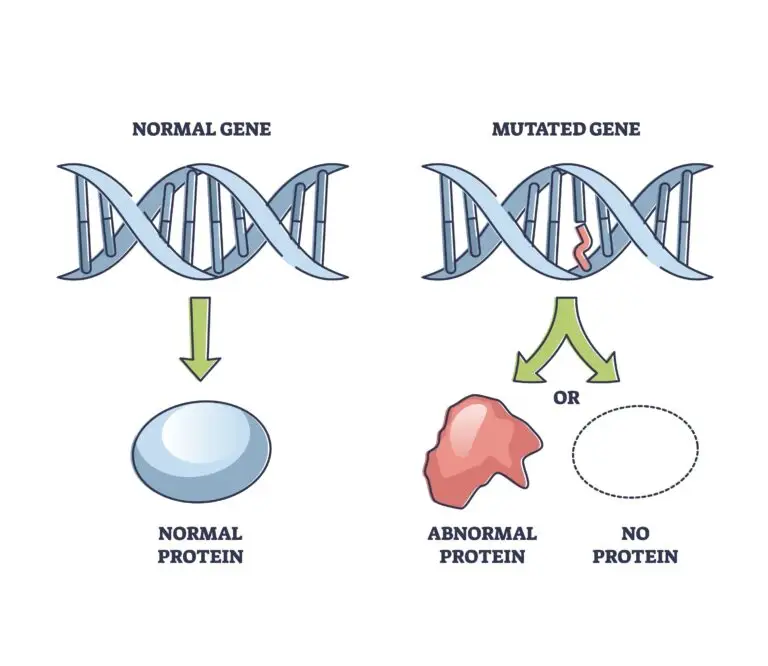Mutation

Table of Contents
What is Mutation?
A mutation is a change in the sequence of nucleotides (the building blocks of DNA or RNA) in an organism’s genetic material. Mutations can occur in various ways and at different scales, ranging from single nucleotide changes to large-scale alterations in the structure or number of chromosomes.
Mutations can be caused by a variety of factors, including errors during DNA replication, exposure to certain chemicals or radiation, or through the influence of external mutagens.
Genetic Mutation
Genetic Material
Mutations can affect DNA (deoxyribonucleic acid), which is the genetic material in most organisms, or RNA (ribonucleic acid), which is involved in various cellular processes, including protein synthesis.
Types of Mutations
There are several types of mutations, including:
- Point Mutations: Involving changes in a single nucleotide, which can be categorized into substitutions, insertions, or deletions.
- Frameshift Mutations: Resulting from insertions or deletions that shift the reading frame of the genetic code.
- Chromosomal Mutations: Involving alterations in the structure or number of chromosomes, such as deletions, duplications, inversions, or translocations.
Somatic vs. Germline Mutations
Somatic Mutations: Occur in non-reproductive cells and are not passed on to offspring. These mutations contribute to the diversity of cells within an individual but do not affect the next generation.
Germline Mutations: Occur in reproductive cells (sperm or egg) and can be passed on to offspring. Germline mutations have the potential to be inherited and affect the genetic makeup of future generations.
Spontaneous vs. Induced Mutations
Spontaneous Mutations: Arise naturally during cellular processes such as DNA replication or repair. These mutations can occur randomly.
Induced Mutations: Result from exposure to external factors, such as radiation, certain chemicals, or environmental mutagens. Induced mutations can increase the rate of genetic changes.
Silent, Missense, and Nonsense Mutations
- Silent Mutation: Results in a change in the DNA sequence but does not alter the corresponding amino acid in the protein, often due to the degeneracy of the genetic code.
- Missense Mutation: Causes a change in one amino acid in the protein sequence.
- Nonsense Mutation: Results in the premature termination of protein synthesis, leading to a shortened, nonfunctional protein.
Mutagenesis
The process of inducing mutations deliberately in the laboratory is called mutagenesis. This can be used in research to study gene function or create organisms with specific genetic modifications.
Related Links
Allele
Genetic Variation
Phylogenetics
Variation